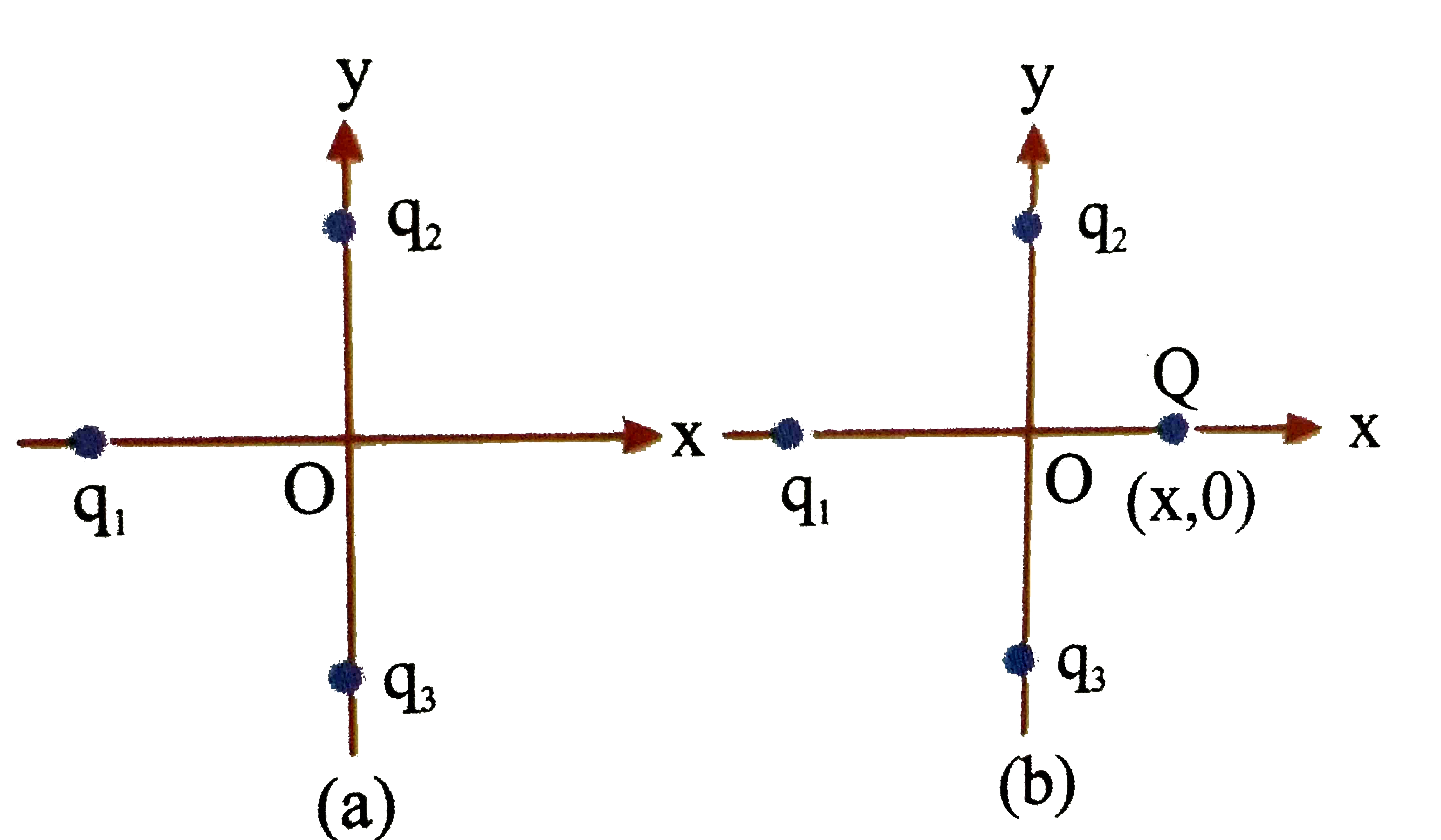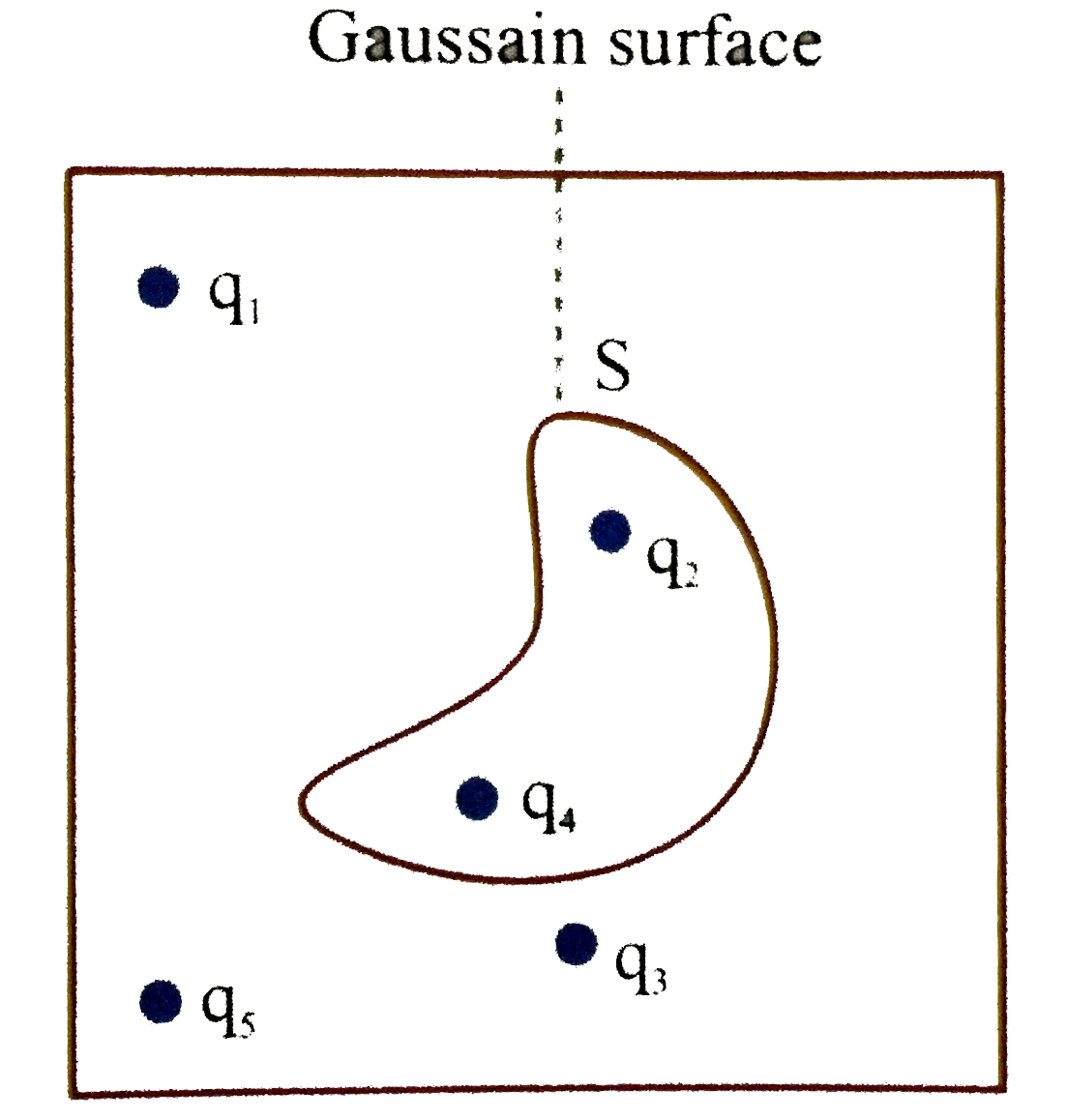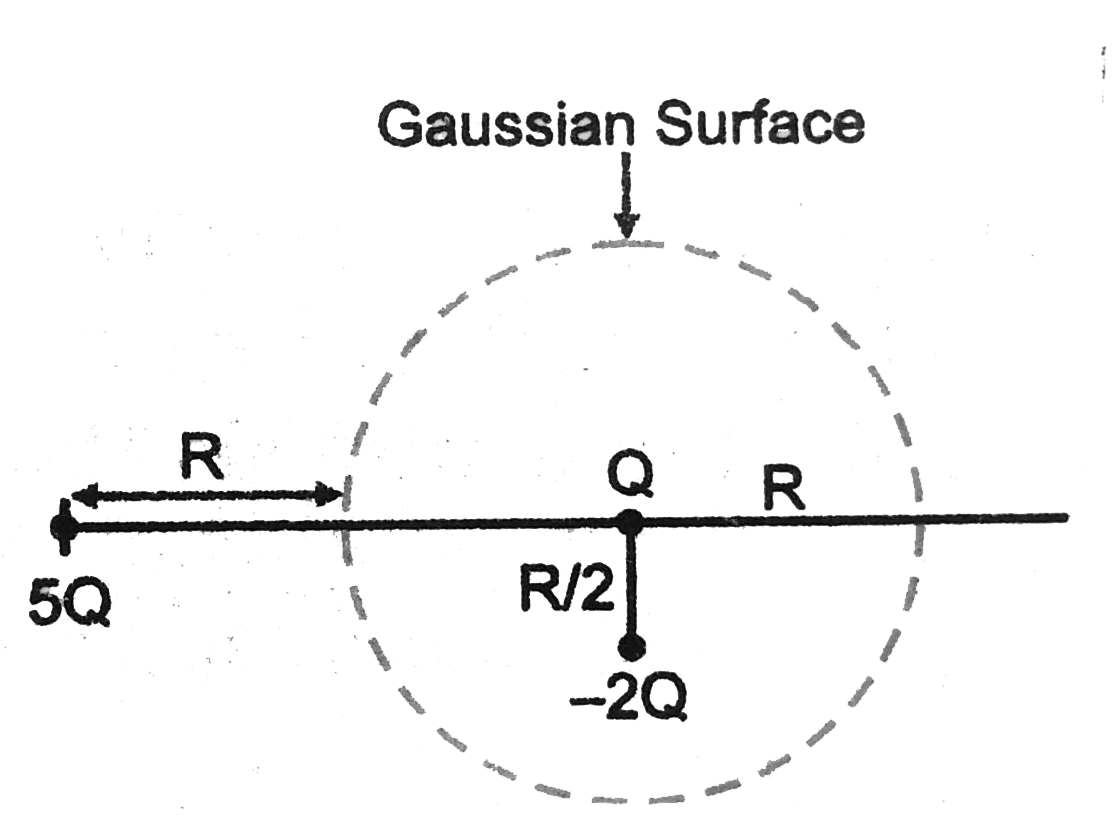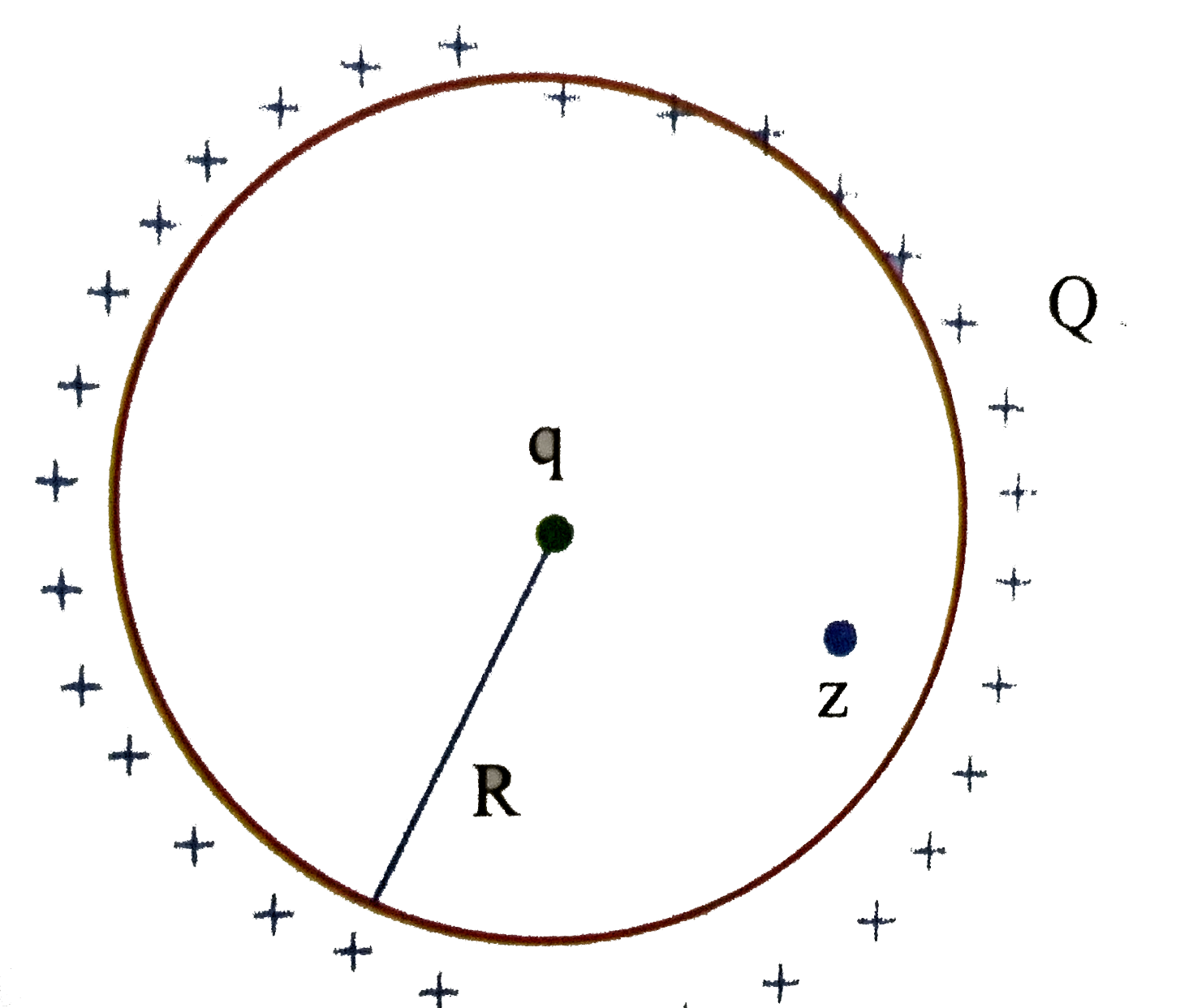Complete Solutions to Ncert File (Ncert (Exemplar Problems) ) of chapter ELECTRIC CHARGES AND FIELDS of Class 12 book with complete answers and questions
| Class 12 | PHYSICS |
| Chapter | ELECTRIC CHARGES AND FIELDS |
| MODERN PUBLICATION | Ncert File (Ncert (Exemplar Problems) ) |
| Number Of Questions | 25 |
| Academic Year | 2023-24 |
In figure two positive charges `q_(2)` and `q_(3)` fixed along the y-axis ,exert a net electric force in the `+x` direction on a charge `q_(1)` fixed along the x-axis if a positive charge `Q` is added at `(x,0)` the force on `q_(1)`

View SolutionA point positive charge is brought near an isolated conducting sphere as shown in figure the electric field is best given by

View SolutionThe electric flux through the surface

View Solutionfive charge `q_(1),q_(2),q_(3),q_(4)`and `q_(5)` are fixed at their positions as shown in figure .`s` is Gaussian surface .The Gauss's law is given by `ointvec(E).vec(ds)=(q)/(epsilon_(0))`

Which of the following statement is correct?
View SolutionFigure shows electric field lines in which an electric dipole p is placed as shown. Which of the following statements is correct ?

View SolutionA point charge +q, is placed at a distance d from an isolated conducting plane. The field at a point P on the other side of the plane is
View SolutionA hemispherical shell is uniformly charge positively .the electric field at point on a diameter away from the centre is directed
View SolutionIf `oint_(s) E.ds = 0` Over a surface, then
View SolutionThe Electric field at a point is
View SolutionIf there were only one type of charge of the universe then
View SolutionConsider a region inside which there are various types of charges but the total charge is zero ,.At points outside the region
View SolutionRefer to the arrangement of charges in Fig and a Gaussian surface of radius `R` with `Q` at the centre. Then

View SolutionA positive charge `Q` is uniformly distributed along a circular ring of radius `R`.a small test charge `q` is placed at the centre of the ring .The

View SolutionAn arbitrary surface encloses a dipole. What is the electric flux through this surface ?
View SolutionA metal spherical shell has an inner radius `R_(1)` and outer radius `R_(2)`. A charge Q is placed at the center of the spherical cavity. What will be surface charge density on (i) the inner surface, and (ii) the outer surface ?
View SolutionThe dimensions of an atom are of the order of an Angstrom. Thus there must be large electric fields between the protons and electrons. Why, then is the electronstatic field inside a conductor zero?
View SolutionIf the total charge enclosed by a surface is zero, does it imply that the electric field everywhere on the surface is zero ? Conversely, if the electric field everywhere on a surface is zero, does it imply that net charge inside is zero.
View SolutionSketch the electric field lines for a uniformly charged hollow cylinder shown in adjoining figure.

View SolutionWhat will be the total flux through the faces of the cube, with side of length a if a charge q is placed at (a) A : a corner of the cube (b) B : mid-point of an edge of the cube (c ) C : center of a face of the cube (d) D : mid-point of B and C.
View SolutionA paisa coin is made up Al.Mg alloy and weighs 0.75 g. It has a square shape and its diagonal measures 17mm. It is electrically neutral and constants equal amounts of positive and negative charges . Treating the paisa coin made up of only Al, find the magnitude of equal number of positive and negative charges. What conclusion do you draw from this magnitude ?
View SolutionConsider a coin of exercise 1.20. It is electrically neutral and contains equal amounts positive and negative charge of magnitude 34.8 kC. Suppose that these equal charges were concentrated in two point charges separated by (i) 1 cm (~half the diagonal of one paisa coin) (ii) 100 m (~length of a long building), and (iii) `10^6` m (radius of the earth). Find the force on each such point charge in each of the three cases. What do you conclude from these results?
View SolutionThe given figure represents a crystal unit of cesium chloride, CsCl. The cesium atoms, represented by one circles are situated at the corners of a cube of side 0.40 nm, whereas a Cl atom is situated at the centre of the cube. The Cs atoms are deficient in one electron while the Cl atom carries an excess electron.
(i) What is the net electric field on the Cl atom due to eight Cs atoms?
(ii) Suppose that the Cs atom at the corner A is missing. What is the net force now on the Cl atom due to seven remaining Cs atoms?

View SolutionTwo charges q and-3q are placed fixed on X-axis separated by a distance d. Where should a third charge 2q be placed such that it will not experience any force?

View SolutionFig shows the electric field lines around three points charges A,B,C.
(a) Which charges are positive ?
(b) Which charge has the largst magnitude ? Why ?
(c ) In which region or regions of the picture could be the electric field be zero? Justify your answer.
(i) near A, (ii) near B, (iii) near C, (iv) nowhere.
View SolutionFive charges, q each are placed at the corners of a regular pentagon of side a. (Refer the adjoining figure)
(a) (i) What will be the electric field at O, if the centre of the pentagon?
(ii) What will be the electric field at O if the charge from one of the corners (say A) is removed?
(iii) What will be the electric field at O if the charge q at A is replaced by -q?
(b) How would your answer to (a) be affected if pentagon is replaced by n-sided regular polygon with charge q at each of its corners?

View Solution
Ncert File (Ncert (Exemplar Problems) ) questions and complete solutions for chapter ELECTRIC CHARGES AND FIELDS of MODERN PUBLISHERS PHYSICS (HINGLISH) of Class 12
All Exercises from MODERN PUBLICATION Class 12 PHYSICS ELECTRIC CHARGES AND FIELDS
- Chapter Practice Test
- COMPETITION FILE ( Objective Question (Assertion Reason ) )
- COMPETITION FILE ( Objective Question (BB.MCQ))
- COMPETITION FILE ( Objective Question (BC.MCQ))
- COMPETITION FILE ( Objective Question (C.MCQ))
- COMPETITION FILE ( Objective Question (D.MCQ) Passage )
- COMPETITION FILE ( Objective Question (A.MCQ) )
- COMPETITION FILE ( Objective Question (BA.MCQ) )
- COMPETITION FILE ( Objective Question (BA.MCQ))
- COMPETITION FILE ( Objective Question (Integer))
- COMPETITION FILE ( Objective Question (Matching ) )
- COMPETITION FILE ( Objective Question (Matrix))
- Conceptual Questions
- Higher Order Thinking Skills & Advanced Level (Questions With Answers)
- Ncert File (Ncert (Exemplar Problems) )
- Ncert File (Textbook Exercise)
- Practice Problems
- Revision Exercises (Additional Question)
- Revision Exercises (Fill in the Blanks )
- Revision Exercises (Long Answer )
- Revision Exercises (Numerical Problems )
- Revision Exercises (Short Answer )
- Revision Exercises (Very short)
- Solved Example
- Tough & Tricky Problems